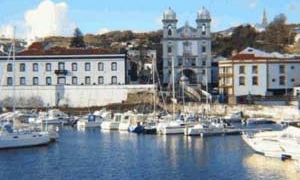On Barsa-Kelmes Island, strange and inexplicable events have occurred. What great secrets does the thick fog surrounding this island conceal?
Among the more than 1,000 islands scattered across the Aral Sea in Central Asia, none are as mysterious and unusual as Barsa-Kelmes Island.
In the Kazakh language of the locals, Barsa-Kelmes Island translates to “the island of no return.” What has caused this island, once spanning 133 km2 (as of 1980), to become one of the most mysterious areas in the world, despite the Soviet Union deploying military forces, planes, and tanks to decipher its secrets, only to find all efforts in vain?
Unexplainable Phenomena
Legend has it that in the 13th century, the inhabitants of Barsa-Kelmes Island were forced to flee to escape the massacre by the Mongol army. A short time later, upon returning to the island, they were astonished to find bizarre changes, as though decades had passed. Ultimately, the islanders only stayed for a few months before relocating elsewhere.
To this day, Barsa-Kelmes is a desolate place. The last residents left the island many decades ago.
On Barsa-Kelmes, one encounters a strange land shrouded in dense fog, where it is believed that extraordinary and inexplicable events occur. These bizarre happenings are so frequent that nearby residents have dubbed it “a gateway to another dimension.”
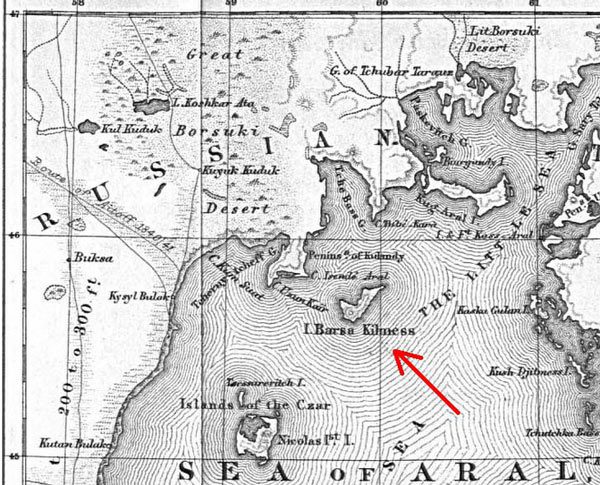
Map of Barsa-Kelmes Island in 1853. (Source: Royal Geographical Society Journal).
Let’s Explore the Strange Events on This Island of No Return
Firstly, Barsa-Kelmes is believed to be inhabited by extraordinary creatures, seemingly not from Earth but from another dimension. Local people claim to have seen gigantic bird-like creatures flying around the island, spotted large sea snakes swimming in the waters surrounding the island, and occasionally glimpsed enormous “sea monsters” with long necks lurking in the thick fog.
Moreover, anyone who has ventured to explore the island has mysteriously disappeared. They never returned after entering that “forbidden land.”
Not only is it thought to be the dwelling of giant, extraordinary creatures that seemingly “devour” people within the thick fog, Barsa-Kelmes Island also renders all modern human devices inoperable.
When approaching the island, watches suddenly stop, compasses malfunction, and the compass needle spins aimlessly. Even more astonishing, people feel that time sometimes flows very slowly and, at other times, very quickly.
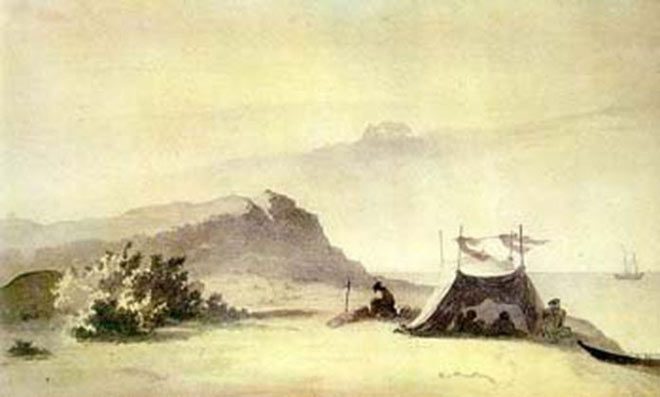 Exploration tent on Barsa-Kelmes Island, 1848.
Exploration tent on Barsa-Kelmes Island, 1848.
One peculiar incident that prompted Soviet government intervention was the event in 1959.
After several years of milder winters than the surrounding islands, in 1959, Barsa-Kelmes suffered an exceptionally harsh winter. Some local Kazakhs living near the island believed that Barsa-Kelmes could be an ideal frozen storage for the fish they had previously caught, so they ventured into the area despite warnings from the village chief.
However, after the harsh winter passed and spring arrived, they still had not returned home. Their relatives organized a large-scale search, but after many days with no signs of the missing individuals, they reported to the authorities.
The Soviet Union’s Attempt to Unravel the Mystery: Helicopters and Tanks Deployed, Yet the Mystery Remains
The Soviet government dispatched a helicopter to scan the area in search of the missing individuals on Barsa-Kelmes Island. However, as the aircraft entered the thick fog, the cockpit instruments became erratic and gradually failed one by one. The two pilots were forced to make an emergency landing.
The last words heard on their radio while making an emergency report were that they saw blurry elliptical objects appearing in the dense fog. Shortly after, communication between the command base and the helicopter went completely silent.
After the helicopter “vanished” into the thick fog of the strange island, the Soviet Union sent in a tank with a long cable to enter the area.
The team on the tank was ordered to maintain constant communication while entering the thick fog. However, once again, something bizarre and frightening occurred. The radio signal went silent after the tank entered the fog.
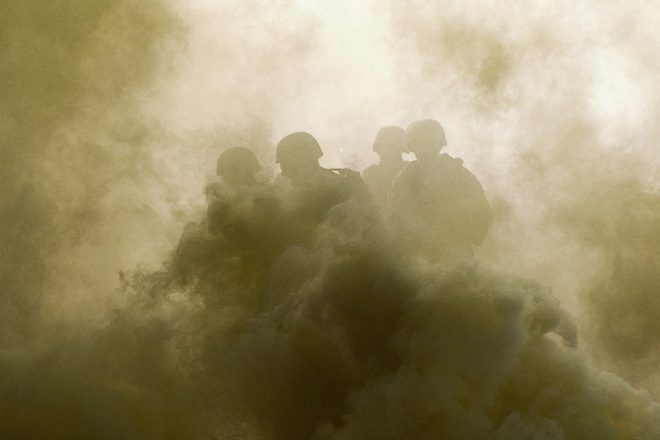
Illustration.
When the tank was eventually pulled back with the cable, it was completely empty inside. The entire tank seemed to be covered by a layer of ice.
Suspected samples were sent to a modern laboratory in Moscow for testing; however, scientists found nothing unusual—no strange substances, artifacts, or crucial clues for the investigation.
Unable to explain the strange phenomena within the dense fog on Barsa-Kelmes Island, speculation began to arise regarding mysteries related to UFOs and extraterrestrial bases.
Russian UFO researcher Vadim Chernobrov, after studying old documents related to unexplainable phenomena at Barsa-Kelmes, believes that the fog serves as a protective shield for some secret base hidden within the island.
This fog has the ability to disable electronic devices, aimed at preventing unwanted intrusions from the outside.

Illustration.
What is the fate of those who have ventured to that island of no return now? What great secrets are hidden within the dense fog? Is Barsa-Kelmes an underground base for extraterrestrials, or is it a human-made structure designed to conceal some colossal secret?… All these questions remain unanswered.
Barsa-Kelmes: The “Bermuda Triangle” of Central Asia
The strange and unexplainable events on this island do not end with ancient legends. In the latter half of the 20th century, it became known as a “fertile ground” for modern conspiracy theories.
Reports of mysterious activities, including unexplained airplane crashes and UFO sightings, have turned this island into its own “Bermuda Triangle” of Central Asia.
Publications such as the Soviet magazine “Tekhnika Molodyozhi” also featured intriguing stories about the island during this time, including tales of time distortion, malfunctioning compasses, and UFO sightings. These stories were often recounted by local fishermen, further igniting public fascination with Barsa-Kelmes.
Present-Day Barsa-Kelmes
Today, Barsa-Kelmes is no longer an isolated island; instead, its landscape has transformed into a barren desert, home to scorpions, spiders, and snakes.
Despite the significant change in terrain, locals still refer to this place as an ‘island.’ Although Barsa-Kelmes is no longer in its original form, it still holds a certain significance in local consciousness.
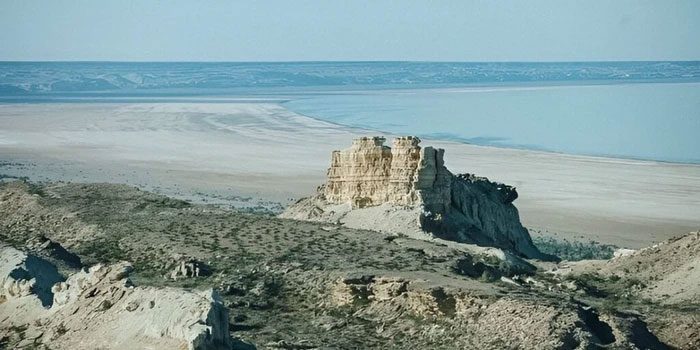
Barsa-Kelmes Nature Reserve (established in 1939), a wildlife refuge on Barsa-Kelmes Island.

















































